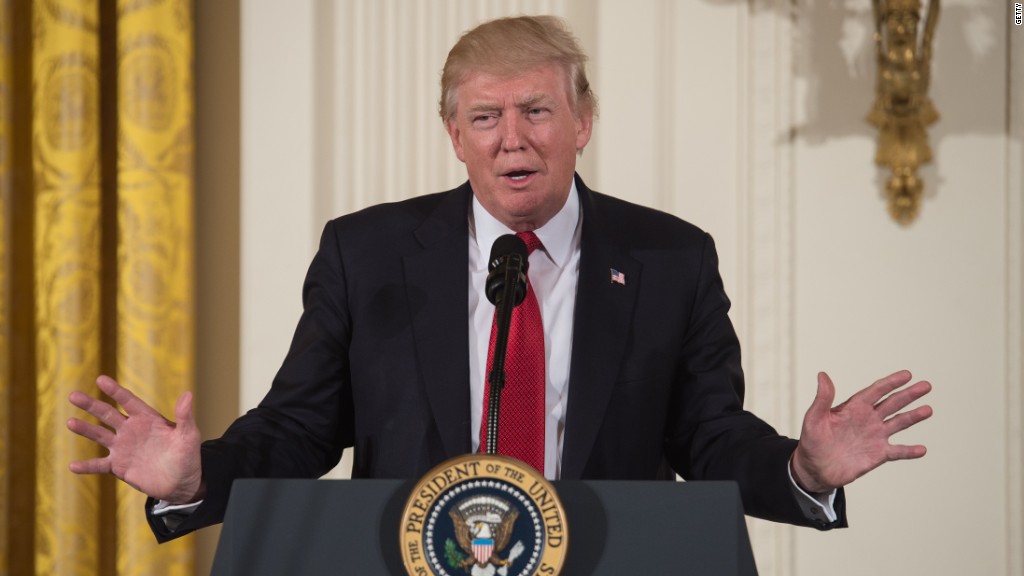
Less than nine years after the Wall Street meltdown, the House of Representatives has voted in favor of gutting the post-crisis Dodd-Frank rules placed on big banks.
While the Financial Choice Act is likely dead on arrival in the Senate, some parts of the legislation may end up surviving.
The bill's architect, Rep. Jeb Hensarling, cheered that it will "end bailouts once and for all" because the legislation would take away the post-crisis powers granted to federal authorities to help them deal with a financial emergency like Lehman Brothers.
The tools, known as Orderly Liquidation Authority, allow regulators to resolve a failing financial firm. It is similar to how the FDIC handles failing banks. Conservatives argue that these emergency powers in Dodd-Frank have made Too Big To Fail permanent by implying the government will always be ready to swoop in with a rescue.
Eliminating bailouts is a noble goal, but some fear the Financial Choice Act is seriously flawed by going about it this way.
Fitch Ratings warned that eliminating these powers "could expose the banking sector to systemic risk in the event of a crisis."
In other words, taking away this authority from the Federal Reserve and the FDIC could allow for the problems of one failing firm to infect other, healthier ones.
Related: House votes to kill Dodd-Frank. Now what?
Ben Bernanke, who knows a thing or two about financial meltdowns, agrees with this concern.
Bernanke, the Fed chair during the 2008 episode and a Great Depression scholar, wrote in a blog post earlier this year that eliminating OLA would be a "major mistake" because these are essential tools "for ensuring that financial stress does not escalate into a catastrophic crisis."
And, it's not just Bernanke who's ringing the alarm bell. Other former well-respected regulators, including former Fed chief Paul Volcker and former FDIC head Sheila Bair, also support keeping these powers.
More than 120 leading law professors and economists sent a letter to Congress last month opposing the elimination of OLA. "There is unanimity in the conclusion that elimination of Orderly Liquidity Authority would be a grave mistake," the letter said.
Hensarling and others argue that the current system can be replaced with a new bankruptcy procedure for dealing with risky big banks.
But can bankruptcy truly deal with an imploding mega bank that has financial ties with global tentacles? These experts don't think so, and worry that the bankruptcy of such a bank would threaten to drag down multiple entities, wreaking havoc around the world.
Bernanke said the 2008 experience shows that bankruptcy procedures are "entirely inadequate for the situation."
Bankruptcy judges need to do what's best for creditors, not the delicately-linked financial system. They also lack the ability to act in a coordinated way that regulators can during a time of panic.
Even Treasury Secretary Steven Mnuchin has acknowledged that the current bankruptcy code wouldn't be enough to unwind a big bank.
That suggests whatever legislation emerges from the Senate, an alternative plan for unwinding risky firms will be needed.
Related: Santander buys 'failing' Spanish bank for 1 euro
Hensarling's argument about bailouts also doesn't hold water.
Dodd-Frank's aim in granting these emergency powers was to prevent deeply unpopular government bailouts by requiring private capital to be used to prop up failing firms. Taxpayer money can be used only to provide temporary support, but stockholders would be wiped out and the firm's management would be replaced.
"The OLA is not a bailout mechanism," Bernanke argues.
In fact, some believe Hensarling's reform could make future bailouts more, not less, likely.
If the government doesn't have these emergency powers, and bankruptcy isn't a real option, then what options are left?
"Without it, it would appear that there would have to be government intervention," Cowen & Co.'s Jaret Seiberg wrote in a recent report.


